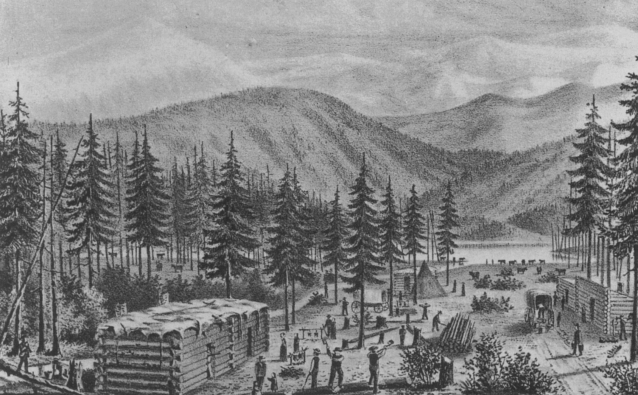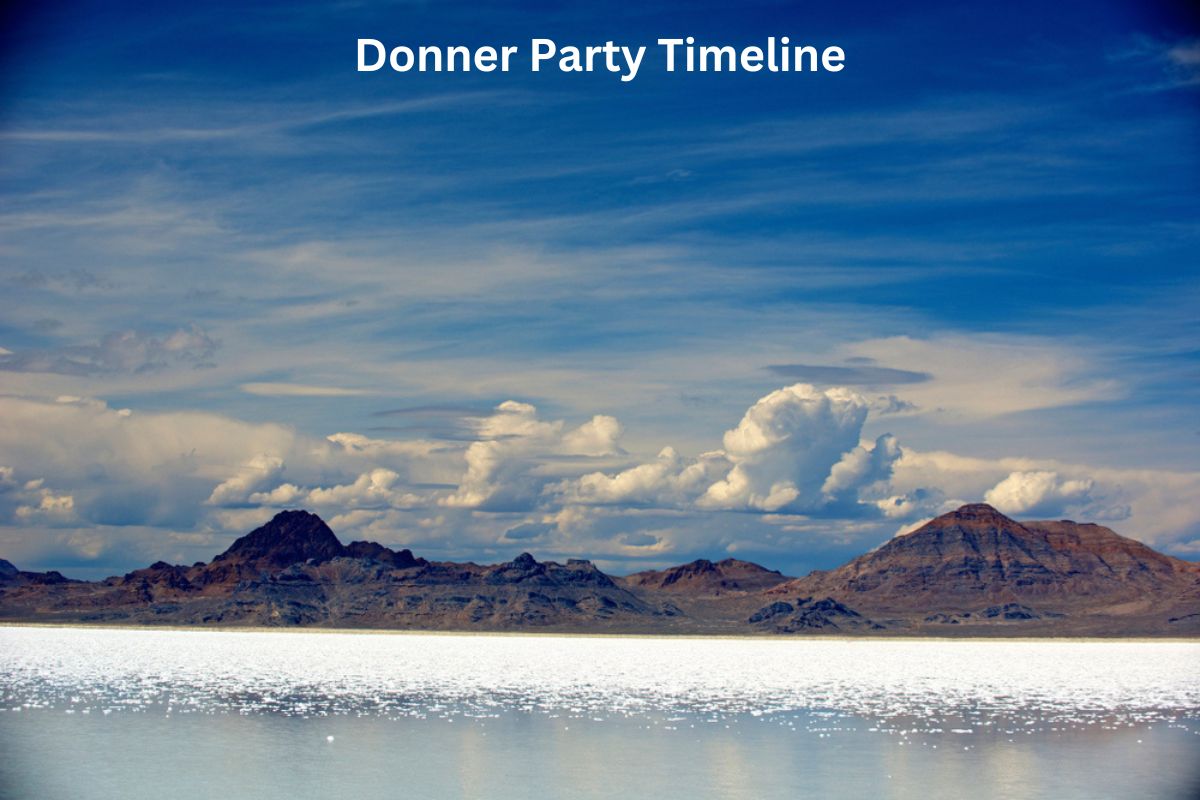The Donner Party, a group of American pioneers, embarked on a fateful journey to California in 1846, seeking new opportunities in the American West.
However, their expedition would turn into one of the most harrowing and tragic tales of westward migration in U.S. history.
As they faced treacherous terrain, harsh weather, and dwindling supplies, the Donner Party’s struggle for survival in the Sierra Nevada mountains would ultimately lead to desperate measures and unimaginable hardship.
In this article, we delve into the timeline of the Donner Party’s ill-fated expedition, chronicling the key events that unfolded during their arduous journey and their subsequent battle for survival in the unforgiving wilderness.
| Date | Event |
|---|---|
| April 1846 | Donner Party departs Springfield, Illinois, and Independence, Missouri. |
| May 1846 | Journey begins with various challenges along the way. |
| July 1846 | Party reaches Fort Bridger and decides to take the Hastings Cutoff. |
| Late July 1846 | Difficulties in the Great Salt Lake Desert. |
| August 1846 | Challenges along the Humboldt River. |
| Late October 1846 | Arrival at Truckee Lake, snowfall, and inability to continue. |
| November 1846 | James F. Reed’s rescue party departs for California. |
| December 1846 | Starvation and desperation among the stranded party, some resort to cannibalism. |
| February 1847 | First Relief party reaches the stranded Donner Party. |
| February-March 1847 | Additional relief parties arrive, rescuing survivors. |
| April 1847 | Last of the survivors rescued. Final death toll estimated at around 40 out of 90. |
Timeline of the Donner Party
April 1846: Donner Party departs Springfield, Illinois, and Independence, Missouri
In April 1846, a group of around 90 pioneers known as the Donner Party set out on their journey to California. They originated from two main starting points: Springfield, Illinois, and Independence, Missouri.
These pioneers were motivated by the promise of a better life in California, where they hoped to find land, opportunities, and a fresh start.

May 1846: Journey begins with various challenges along the way
As the Donner Party embarked on their westward journey, they encountered various challenges right from the start.
Also Read: Facts About the Donner Party
The overland journey in the 19th century was arduous, and they faced rugged terrain, river crossings, and the need to secure adequate supplies for the long and uncertain road ahead.
The travelers faced the trials of the trail with determination and hope, but they were unaware of the hardships that would lie ahead.
July 1846: Party reaches Fort Bridger and decides to take the Hastings Cutoff
By July 1846, the Donner Party had reached Fort Bridger, a trading post in what is now Wyoming. It was at this point that they faced a critical decision. They received advice from a man named Lansford Hastings, who proposed a shortcut known as the Hastings Cutoff.
This route was less traveled and promised a faster journey to California. Despite some warnings about the difficulty of this path, the party decided to take the risk and follow Hastings’ recommendation, believing it would save them time on their journey to the fertile lands of California.

Late July 1846: Difficulties in the Great Salt Lake Desert
After the Donner Party’s decision to take the Hastings Cutoff, they entered the Great Salt Lake Desert in what is now Utah.
This proved to be a particularly challenging and treacherous part of their journey. The desert’s harsh conditions included scorching heat, lack of water, and treacherous terrain.
As they struggled to make progress across the desert, they quickly depleted their already limited water supplies and encountered numerous hardships. The Donner Party became increasingly fatigued and disoriented during this stretch of their journey.
August 1846: Challenges along the Humboldt River
Following their grueling passage through the Great Salt Lake Desert, the Donner Party reached the Humboldt River in present-day Nevada.
While they had survived the desert, new challenges awaited them along the banks of the Humboldt River. The terrain was unforgiving, and they continued to face a scarcity of resources.
Their livestock dwindled, and they had to make difficult decisions about which animals to sacrifice for food and supplies. Tensions within the group began to mount as conditions deteriorated, and the party struggled to make progress.

Late October 1846: Arrival at Truckee Lake, snowfall, and inability to continue
By late October 1846, the Donner Party had made their way to Truckee Lake (now known as Donner Lake) in the Sierra Nevada mountains. This was intended to be a stopover before descending into California’s Central Valley.
However, as winter approached, the party encountered a significant obstacle: heavy snowfall. The Sierra Nevada mountains received an early and unusually large amount of snow that year, and the Donner Party found themselves trapped by deep snowdrifts. They were unable to continue their journey, and this marked the beginning of their tragic winter ordeal.
November 1846: James F. Reed’s rescue party departs for California
As the Donner Party became increasingly trapped by deep snow in the Sierra Nevada mountains, their situation grew dire. Realizing the urgency of the situation, James F. Reed, a member of the party, decided to lead a rescue party to California to seek help.
Leaving his family behind, Reed and a small group of men set out on a perilous journey through the snow-covered mountains in the hopes of bringing back assistance for the stranded pioneers.
December 1846: Starvation and desperation among the stranded party, some resort to cannibalism
With each passing day, conditions for the Donner Party grew more desperate. Snow continued to fall, making it impossible for them to leave their makeshift cabins at Truckee Lake. Their food supplies dwindled, and they had exhausted their provisions of cattle and other animals.
The pioneers faced extreme hunger and starvation, and some began to die from exposure and malnutrition. Desperation set in, and the survivors resorted to consuming the remains of those who had already died, a horrifying act of cannibalism born out of sheer necessity
February 1847: First Relief party reaches the stranded Donner Party
In February 1847, the first relief party, led by James Reed, finally managed to cross the treacherous Sierra Nevada mountains and reach the stranded Donner Party. The relief party brought much-needed supplies, including food, blankets, and other essentials.
They also helped relocate some of the surviving pioneers to a cabin downstream known as “Camp of Death,” which offered slightly more shelter from the harsh winter conditions. However, many of the Donner Party members were still trapped in the mountains, and the relief efforts were far from over.
February-March 1847: Additional relief parties arrive, rescuing survivors
Following the arrival of the First Relief, additional relief parties were organized to rescue the remaining members of the Donner Party. These relief parties faced their own challenges in navigating the deep snow and harsh weather of the Sierra Nevada, but they persevered in their efforts to save the pioneers.
As they reached the various cabins where the Donner Party members were stranded, they provided food and support and assisted in the evacuation of the survivors.
April 1847: Last of the survivors rescued. Final death toll estimated at around 40 out of 90
By April 1847, the last of the survivors from the Donner Party were rescued from the Sierra Nevada mountains. The relief efforts had succeeded in saving a portion of the original group, but the toll of the harsh winter and desperate circumstances had been devastating.
The final death toll varied, but it is estimated that around 40 individuals out of the original group of nearly 90 lost their lives during the ordeal. Those who survived faced physical and emotional scars that would stay with them for the rest of their lives.
